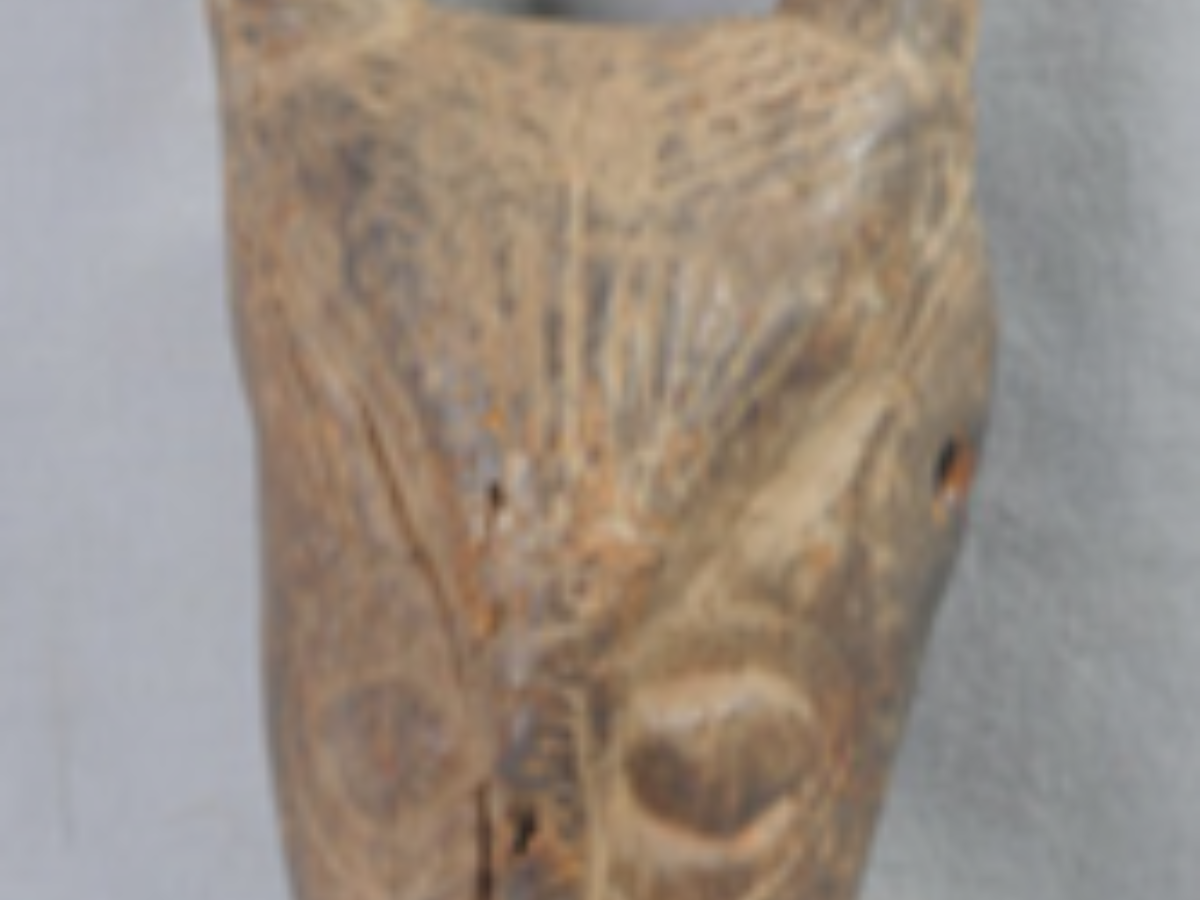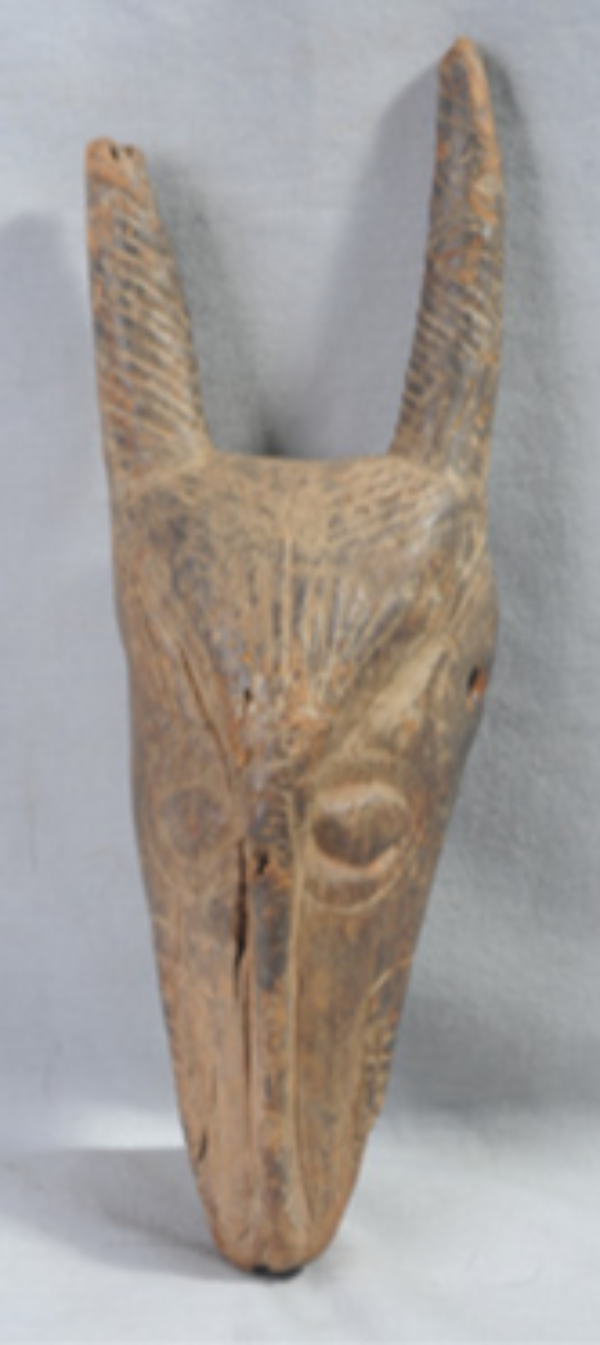State
Tribe Name
Art Type
short description
A deer mask is used in indigenous cultures, as this animal knows the forest and embodies the concept of nature. Just as the carved wooden mask is rejuvenation of the Siddi craft, it represents the efforts of the community in elaborate craftsmanship. Masks like this were often used for ritual dances or festivals into which wearers would enact the tribalism expected in their performances. Most commonly, it symbolizes grace, fertility, and the forest spirit- and such associations with Siddi traditions are manipulated in the imagery of the mask itself.
Thumbnail

Filter Postion
Left
Filter Background
Off
Theme
Filter Header Image

content
Image

description
A deer mask is used in indigenous cultures, as this animal knows the forest and embodies the concept of nature. Just as the carved wooden mask is rejuvenation of the Siddi craft, it represents the efforts of the community in elaborate craftsmanship. Masks like this were often used for ritual dances or festivals into which wearers would enact the tribalism expected in their performances. Most commonly, it symbolizes grace, fertility, and the forest spirit- and such associations with Siddi traditions are manipulated in the imagery of the mask itself.
These include rituals as part of the Siddi where masks are kept as appliances that will continue to keep them in tune with an African homeland heritage. Such communal costumes are usually made from local materials accessible to their environment and then passed on through families and generations, so that they maintain close connections with their cultural backgrounds.
The Siddis are mostly Muslims, with a few Christians and Hindus among them. Dhamal, the traditional dancing and singing form, is performed at occasions of religious routine presentation, usually during the accompanying of drumming. The music and oral tradition are highly full of African culture in their heritage.
Traditionally, their members were employed in agriculture, labor, and other forest-based activities. Even today, however, opportunities for improvement in their economic conditions have been few. However, within the last few years, visible steps have been taken to bring into visibility through governmental efforts and popular cultural recognition.
These include rituals as part of the Siddi where masks are kept as appliances that will continue to keep them in tune with an African homeland heritage. Such communal costumes are usually made from local materials accessible to their environment and then passed on through families and generations, so that they maintain close connections with their cultural backgrounds.
The Siddis are mostly Muslims, with a few Christians and Hindus among them. Dhamal, the traditional dancing and singing form, is performed at occasions of religious routine presentation, usually during the accompanying of drumming. The music and oral tradition are highly full of African culture in their heritage.
Traditionally, their members were employed in agriculture, labor, and other forest-based activities. Even today, however, opportunities for improvement in their economic conditions have been few. However, within the last few years, visible steps have been taken to bring into visibility through governmental efforts and popular cultural recognition.
Image Mode
landscape
promoted
On
Verified
Off
